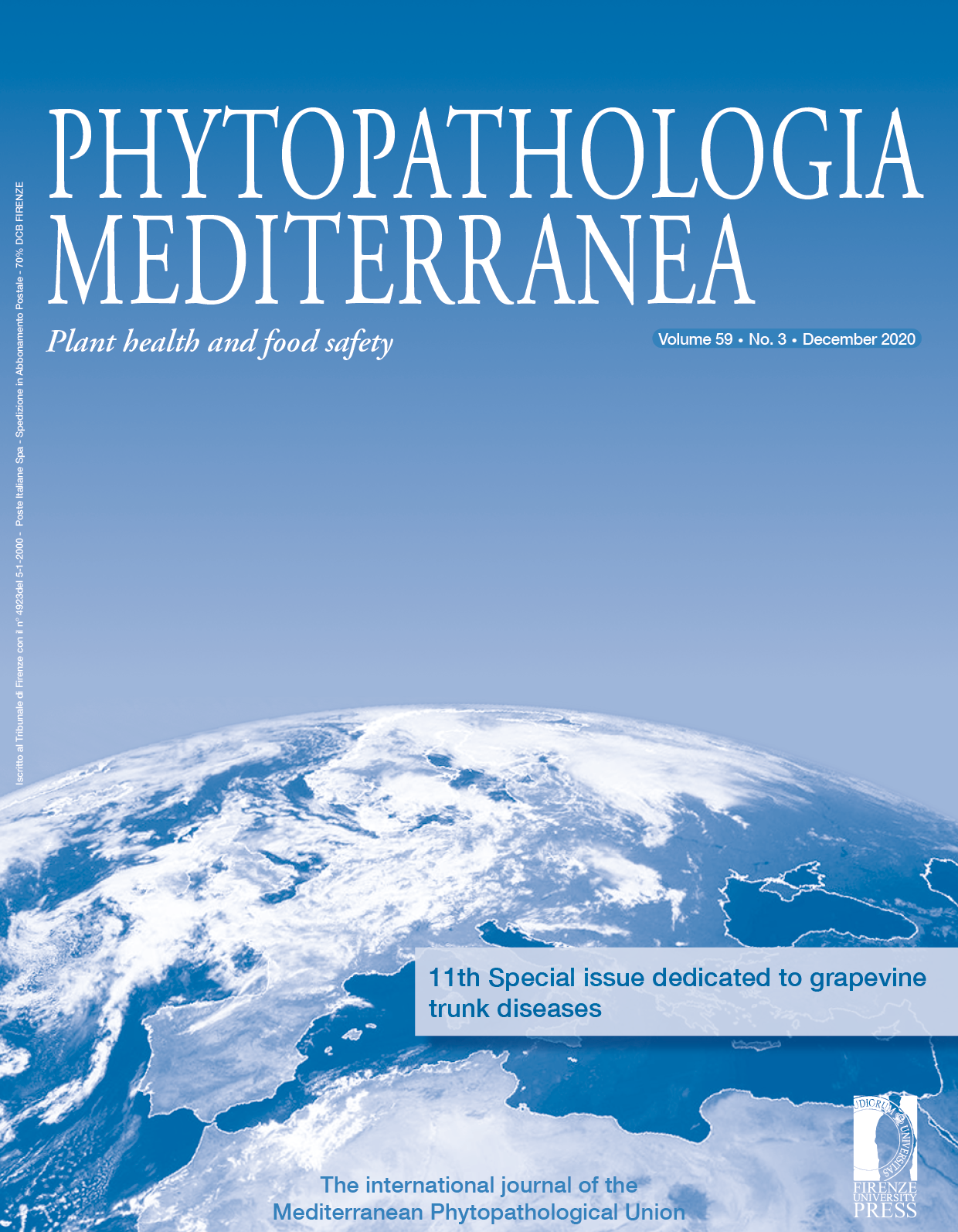Grapevine trunk disease fungi: their roles as latent pathogens and stress factors that favour disease development and symptom expression
Published 2020-10-10
Keywords
- Abiotic and biotic stresses,
- black foot disease,
- Botryosphaeria dieback,
- endophyte,
- Esca
- Eutypa dieback,
- Petri disease,
- Phomopsis dieback ...More
How to Cite
Abstract
Grapevine trunk diseases (GTDs) are major biotic factors reducing yields and limiting vineyard economic life spans. Fungi in the GTD complex cause a range of symptoms in host plants, although these pathogens are slow wood colonizers and potentially latent pathogens. Understanding has recently increased on the possible roles that GTD fungi may play as latent pathogens, and how this can be translated into disease management. This paper summarizes evidence for the latent nature of infections by these fungi in grapevines and other hosts. Abiotic and biotic stressors have been associated with symptom expression in many hosts, but limited information is available regarding their roles in symptom development in grapevines. Based on research conducted in other pathosystems, this review discusses how abiotic and/or biotic stress factors may influence the transition from the endophytic to the pathogenic phases for GTD fungi. Potential methods for stress mitigation are also outlined as alternative GTD control strategies to minimize the economic impacts that that these diseases have on grape production.






